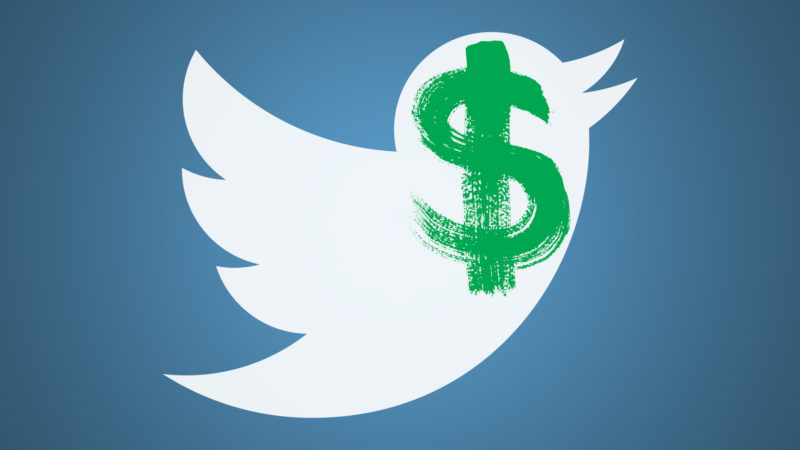Twitter misses revenue estimates as brand advertising biz weakens
After years of audience growth struggles, Twitter's ad business is now having a hard time, particularly with brand advertisers.
Now Twitter’s business growth is the problem.
After years of struggling to grow its audience, Twitter is now struggling to grow its revenue. In the first quarter of 2016, 310 million people checked Twitter while logged in, a three-percent year-over-year increase. But Twitter’s total revenue hit $594.5 million, which is 36 percent more money than the company made a year ago, but less than the $607.8 million that analysts projected it to make. And the company reported an $80 million net loss for the quarter.
Twitter blamed the less-than-expected revenue figure on its brand advertising business. “Brand marketers did not increase spend as quickly as expected in the first quarter,” the company said in its earnings letter released on Tuesday.
In particular, large brand advertisers didn’t increase the money they spend on ads as much as Twitter had expected. That’s not good. Brand advertisers have been and remain Twitter’s largest source of revenue.
Twitter has been growing the other side of its advertising business. Revenue from its direct-response and app-install ads grew by nearly 100 percent year over year. That helps to explain why its total advertising revenue grew by 37 percent year over year to $531 million. But the growth of Twitter’s overall ad revenue has been decelerating, from 125 percent in Q1 2014 to 72 percent in Q1 2015, to now 37 percent in Q1 2016.
Twitter has been turning to video ads to boost its ad revenue growth. But it doesn’t seem to be having the desired effect. For starters, its autoplay video ads are “primarily” to blame for the 58-percent decline in the average price brands pay for people to engage with their ads, according to the company. And instead of siphoning money from brands’ TV or digital video budgets, it’s redirecting the money that advertisers are already spending on Twitter ads. Twitter said that its video ad revenue stemmed “largely” from marketers redirecting the money they would have spent on normal Promoted Tweet campaigns to Promoted Video campaigns.
“We’re hearing from marketers that growth in overall video spend on Twitter will be driven by tapping into incremental online video budgets, which in turn requires us to provide a set of additional features including more detailed demographic targeting and verification, and reach and frequency planning and purchasing. These features are in development and will launch in the fall as we bring our new NFL/Thursday Night Football ad opportunity to market,” Twitter said in its earnings letter.
Twitter has been trying to grow its video ad revenue since first testing the format in August 2014. For example, it introduced the First View ad format that lets brands be the topmost video ad people see when they first check Twitter on a given day. Twitter says that more than 60 brands, including Universal Pictures, Audi and Warner Bros., have bought these ads across 17 countries.
Twitter is also banking on its deal with the NFL to livestream Thursday Night Football games next season. It remains to be seen how much of a help that may be, though Twitter did say one Fortune 50 brand has signed a deal to advertise against the livestreams. And Twitter renewed its deals with three agency holding companies, which should help it hang onto a large chunk of its existing ad revenue if not add more.
During Twitter’s earnings call on Tuesday, Twitter COO Adam Bain said the amount of money the agency groups committed to spend on Twitter ads increased by 40 percent year over year with the renewals and that the deals are centered around video ads. So those deals could already be helping Twitter’s video ad business bring in new money, as opposed to moving around existing money.
But Twitter isn’t betting the house on video. It also has its dynamic product ads that retarget people by showing them products they saw on a brand’s site. Sometime during the second quarter, Twitter will let brands buy these ads through the third-party ad-buying dashboards that plug into its Ads API. That could help fetch it more money from direct-response advertisers and potentially help to offset its softening brand advertising business.
There’s also Twitter’s off-network ad business, which it’s been building since buying mobile ad exchange MoPub in September 2013. That business is still small. In the first quarter it generated $63 million in revenue, which is less than the $85 million it generated in Q4 2015 and only accounted for 12 percent of total ad revenue. Twitter didn’t say how much that revenue grew year over year, but it did say that revenue from ads on Twitter’s own properties grew by 23 percent year over year.
Opinions expressed in this article are those of the guest author and not necessarily MarTech. Staff authors are listed here.
Related stories
